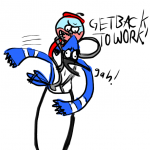Earlier this year I wrote a blog post about how a lack of service design got under my skin. In the article, I talked about a trip I had to a popular beauty brand’s store. A couple of months later, I found this article which details how Sephora updated their website experience to better accommodate online shoppers. But I couldn’t help but wonder, ‘what are they doing to help their in store experience?’. Enter service design.

As I mentioned in my previous article, I’m still on the fence regarding whether service design should be separate from user experience design. I think the main issue with it being this way is that user experience design gets construed as ‘designing for the mobile or web interface only’ by both UX practitioners and those that hire us. Thus, UXers begin to leave out the service part of their solution, either because they are oblivious that it is their responsibility or because their boss tells them that the service part of the solution is for the service designer to figure out. Because of this a gap in the product forms between the web and any other channel experiences. In the case of Sephora, this could be ringing true.
I would say that the solution to this problem is to stop separating service design from user experience design, but that opportunity has already passed. The title user experience designer has fallen flat, and has been misconstrued so many times that many people don’t even want it anymore. Service design provides an out in this way, and allows people to work on different types of projects besides just the interface ones. However, I do think that one solution to this problem is for all of us in this profession who design for a user’s experience with a product or service to go back to basics and really understand the pillars that this profession stands on. To me, these are the pillars of Information Architecture: users, content, context. Understanding that we design for the intersection of these three things covers most any situation one can imagine, and brings us back to our discipline’s center.
The outcome of us going back to these pillars, is that we, as service providers, become aware of what our job really is. It is to facilitate, as best as possible, a user’s experience with a product or service. No matter what we call ourselves, that will never change. And, the sooner we all become aware of this, the sooner we can stop creating and arguing about new disciplines, and just sit down and get to work.
